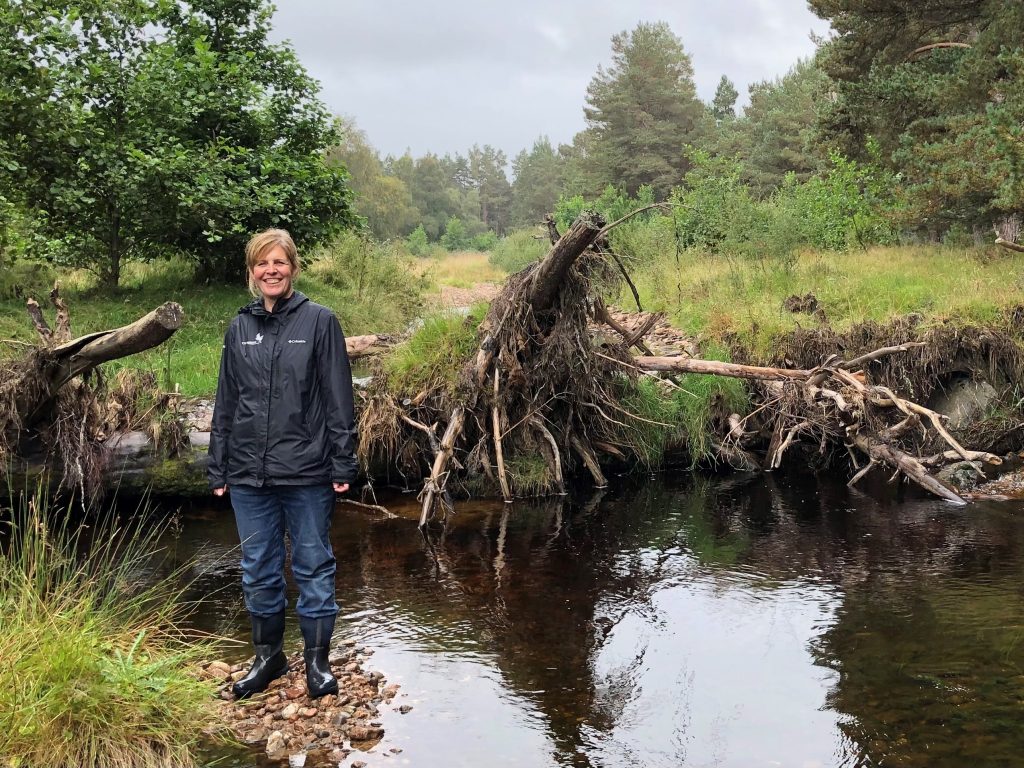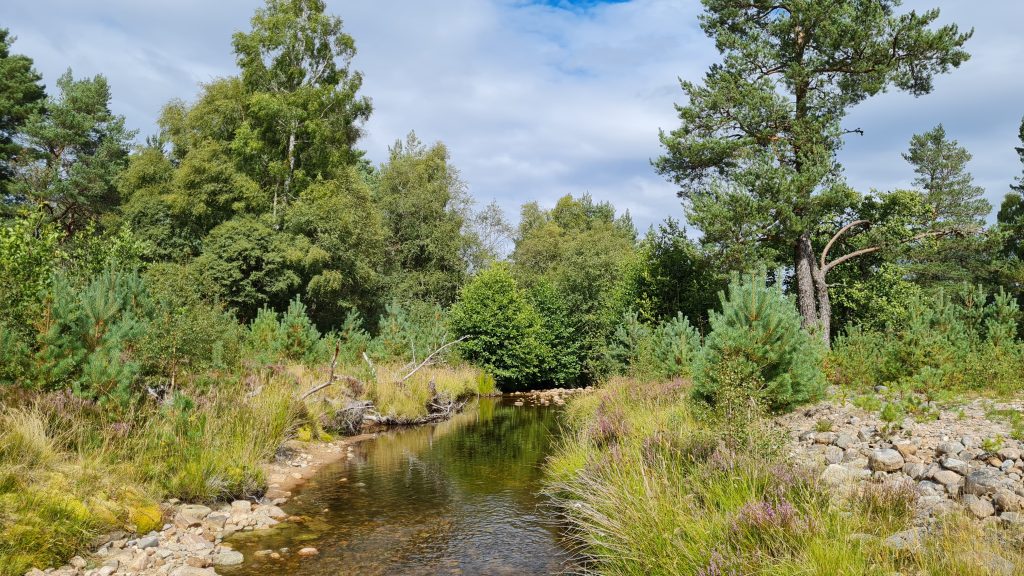Discover: Allt Lorgy
I’m Sally Mackenzie, I am a Conservation Officer with the Cairngorms National Park Authority, with freshwater ecology being my particular area of interest. I spent the first half of my career in the rivers and wetlands of England but I am delighted to be back in the Cairngorms, working across the landscape that I know so well. One of the best things about my role is working in partnership with other organisations, communities, land owners and managers to help make our National Park a better place for wildlife and people.

The Allt Lorgy is a tributary of the River Dulnain in the Spey Catchment. This is a place which brings me joy every time I see it – and it never looks the same – this wee river really is alive! The Cairngorms National Park Authority was instrumental in helping this Spey Catchment Initiative project get off the ground with the support of the local landowners Seafield Estate. It’s now become a celebrated award winning example of river restoration, successfully demonstrating how putting wood back into the river and taking down man made flood banks can let the river move again.
Quite quickly the path of the river changed from a straightened deep channel to one of multiple channnels, meandering its way downstream forming new pathways through the bankside woodland which has sprung up. We were all delighted when recent Spey Fishery Board surveys demonstrated that numbers of young fish had gone up by over 300% and I’m very excited to report that water vole have returned and are living in the side channels. This project is only a short section of river but a very important one which we all readily use to demonstrate to others how easily this type of work can be done with landowners and managers on board.
By recreating meanders and letting the water spill out onto its natural floodplain, it’s helping reduce the speed at which water runs through the catchment, this is really important to help reduce flooding but also in times of low flows as the surrounding land will help store water. Fish and insects living in the water need a diversity of habitat from deeper pools and clean gravel stretches and river edge habitat – what was once a straight uniform channel is now a multi-habitat haven for all kinds of species.

With river restoration projects like the Allt Lorgy happening throughout the Park, we are seeing the direct benefits to people and biodiversity and through the Cairngorms 2030 project, we aim to do much more. Our river catchments run through the heart of communities within the National Park, providing fertile floodplain farmland, supporting industry and employment, tourism and recreational activity. They provide a source of water for the towns and villages along the river valleys, and support internationally important populations of Atlantic salmon and freshwater pearl mussel.
Our three largest catchments – the River Dee, River Spey and the Angus Glens – have had a long history of human engineering, their waters routinely abstracted for agriculture, industry and domestic supply. Couple all that to the impacts of climate change of increased flood events, increasing temperatures and drought and you have rivers under serious pressure.
Working with partners we aim to increase climate change resilience to reduce flood risk and ensure that rivers continue to deliver for the people and wildlife that depend upon them.
